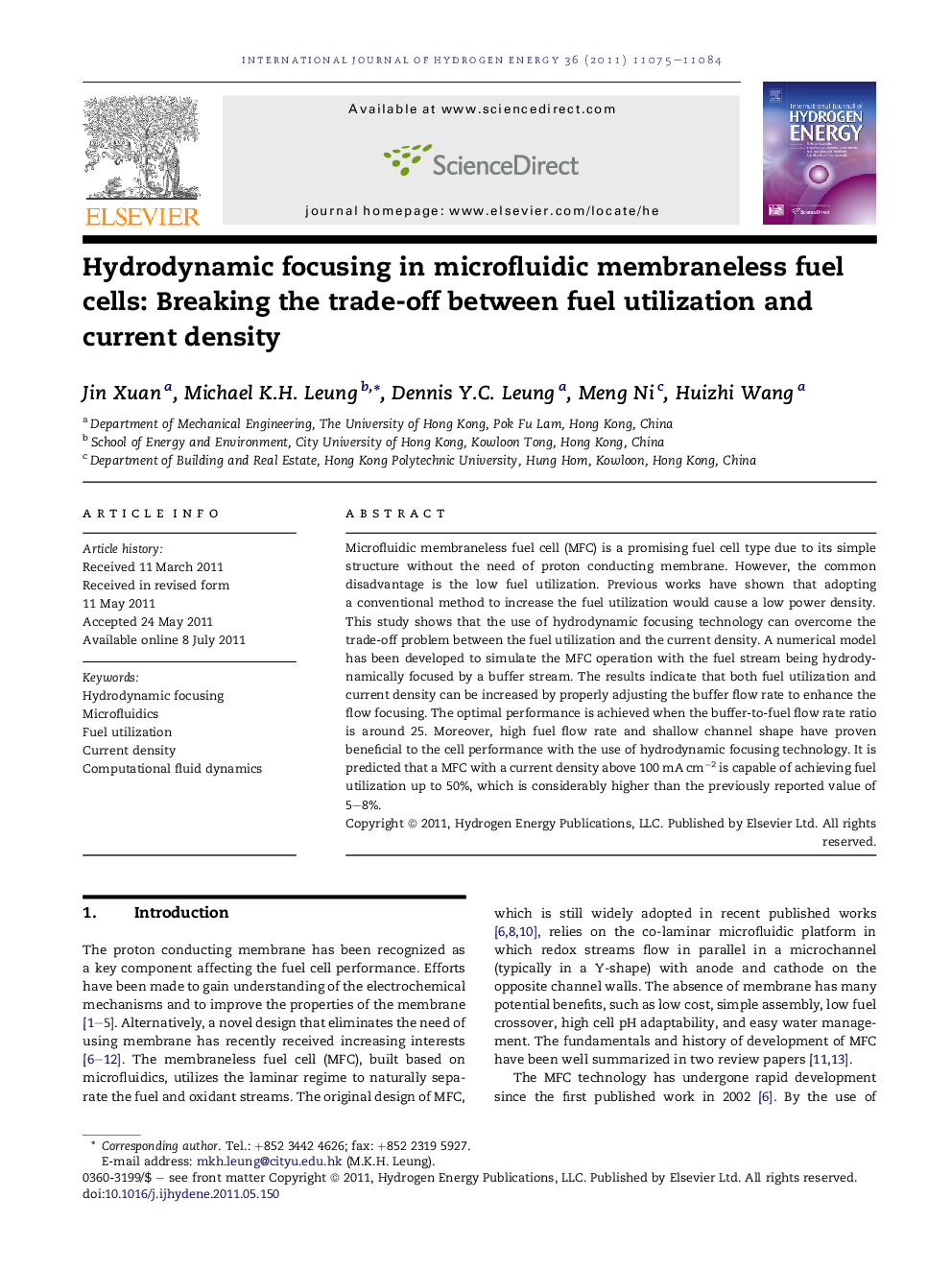| Article ID | Journal | Published Year | Pages | File Type |
|---|---|---|---|---|
| 1277579 | International Journal of Hydrogen Energy | 2011 | 10 Pages |
Microfluidic membraneless fuel cell (MFC) is a promising fuel cell type due to its simple structure without the need of proton conducting membrane. However, the common disadvantage is the low fuel utilization. Previous works have shown that adopting a conventional method to increase the fuel utilization would cause a low power density. This study shows that the use of hydrodynamic focusing technology can overcome the trade-off problem between the fuel utilization and the current density. A numerical model has been developed to simulate the MFC operation with the fuel stream being hydrodynamically focused by a buffer stream. The results indicate that both fuel utilization and current density can be increased by properly adjusting the buffer flow rate to enhance the flow focusing. The optimal performance is achieved when the buffer-to-fuel flow rate ratio is around 25. Moreover, high fuel flow rate and shallow channel shape have proven beneficial to the cell performance with the use of hydrodynamic focusing technology. It is predicted that a MFC with a current density above 100 mA cm−2 is capable of achieving fuel utilization up to 50%, which is considerably higher than the previously reported value of 5–8%.
► 3-D MFC modeling study integrates CFD and electrochemical reactions. ► Hydrodynamic focusing can increase both fuel utilization and current density. ► Optimal performance is at buffer-to-fuel flow rate ratio equal to around 25. ► High fuel flow rate and shallow channel shape yield high cell performance.
